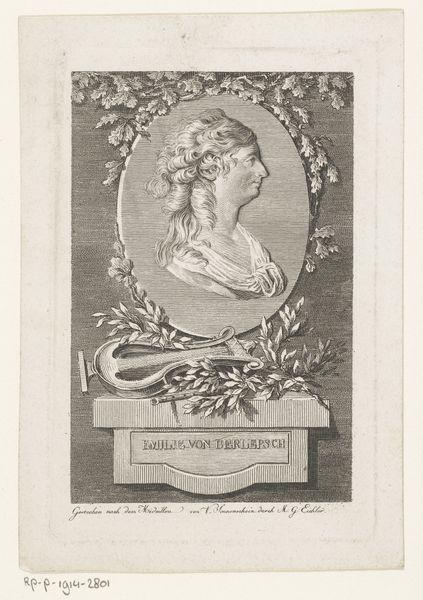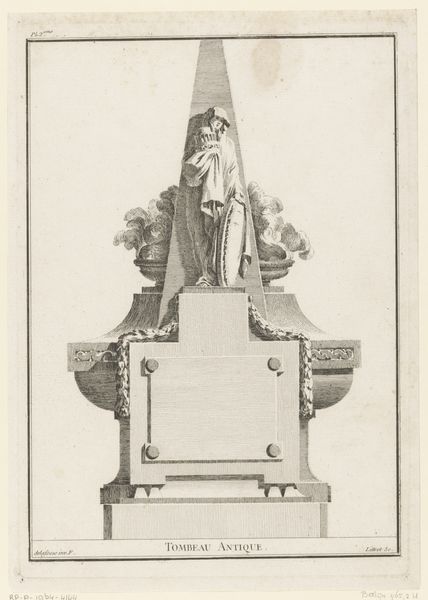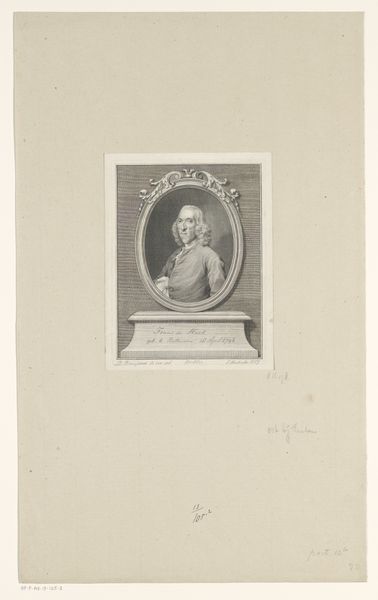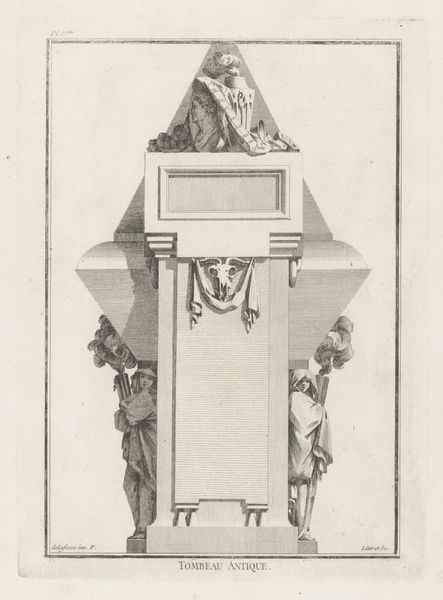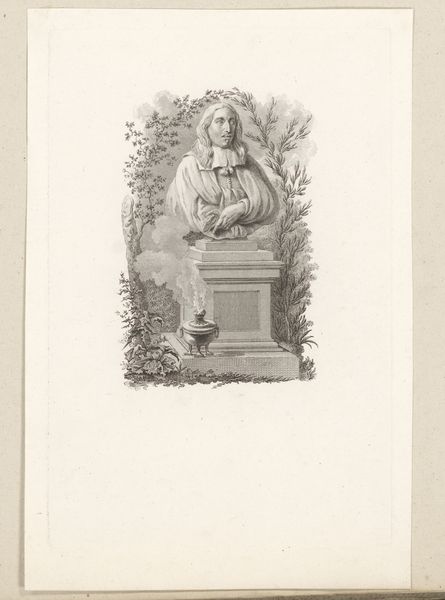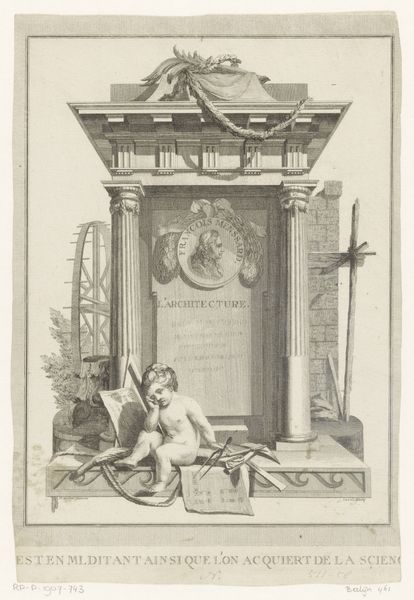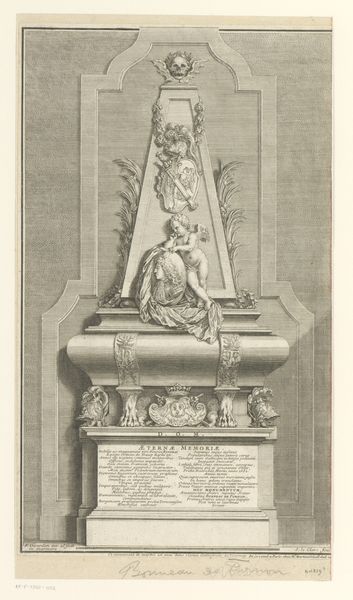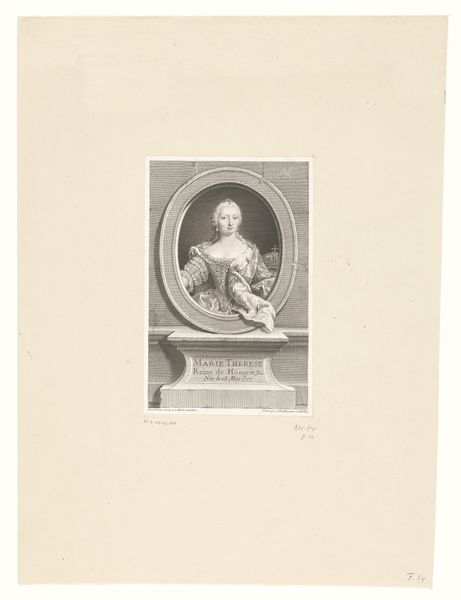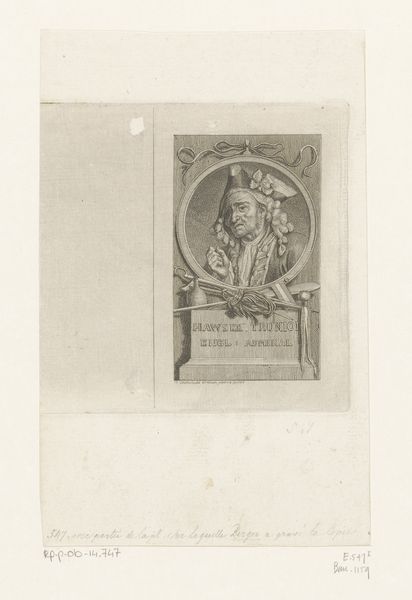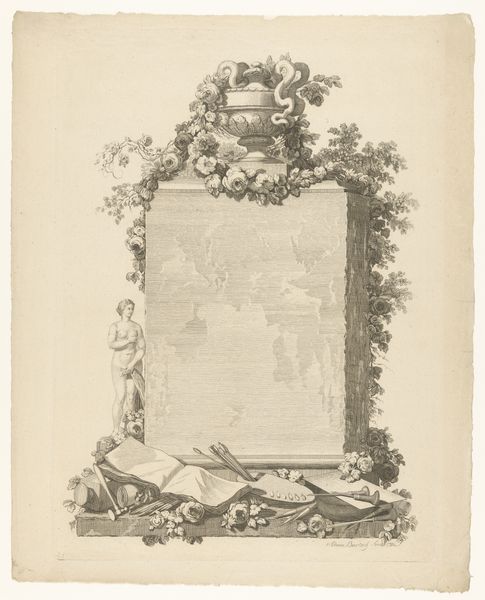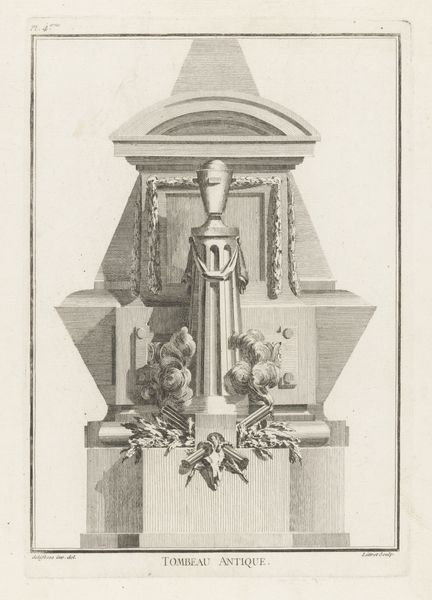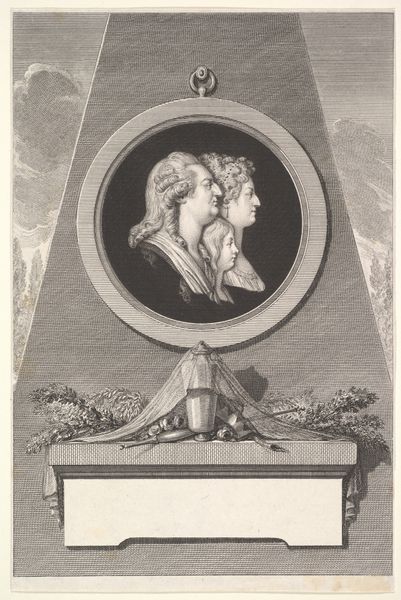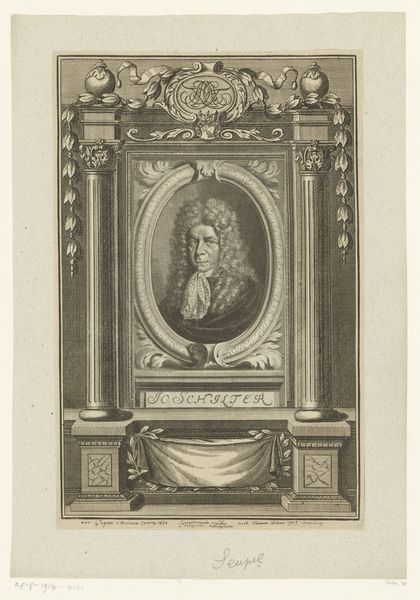
Dimensions: height 182 mm, width 117 mm
Copyright: Rijks Museum: Open Domain
Editor: This engraving, "Monument met het portret van Joseph von Sonnenfels," created between 1763 and 1811 by Quirin Mark, has an interesting old style. It feels very formal and considered. What strikes me is the layered symbolism—how do you interpret this work, considering the period it was made in? Curator: The layers are definitely key. This work is from a period grappling with Enlightenment ideals, and Sonnenfels was a prominent figure advocating for reform. Look at the imagery: we have the portrait bust, of course, representing the individual. But below, there's a man, possibly Prometheus, with another, smaller figure on his palm. The Latin inscription speaks to expressing the spirit and dedicating one's life. How do these elements resonate within the historical context of power and intellectual challenge? Editor: I see it now—so, the statue and the palm frond reference honour and achievement. What would this imply regarding the function of political figures such as Sonnenfels? Curator: Precisely. He’s being presented as a bringer of enlightenment, a liberator, one willing to sacrifice. The man on his palm maybe signifies innovation and critical engagement. It elevates him within a visual and philosophical language that draws on both classical and contemporary notions of virtue. And let’s not forget, engravings were widely circulated. Who was this image aimed to influence, and what social transformations did it hope to inspire? Editor: I hadn't thought about the distribution aspect so much! I'm now seeing how this engraving served a political and social function during that era. Curator: Exactly! And these kinds of prints played a role in constructing identities. Hopefully we have both learned from this. Editor: Certainly! Thanks, it's great food for thought.
Comments
No comments
Be the first to comment and join the conversation on the ultimate creative platform.
